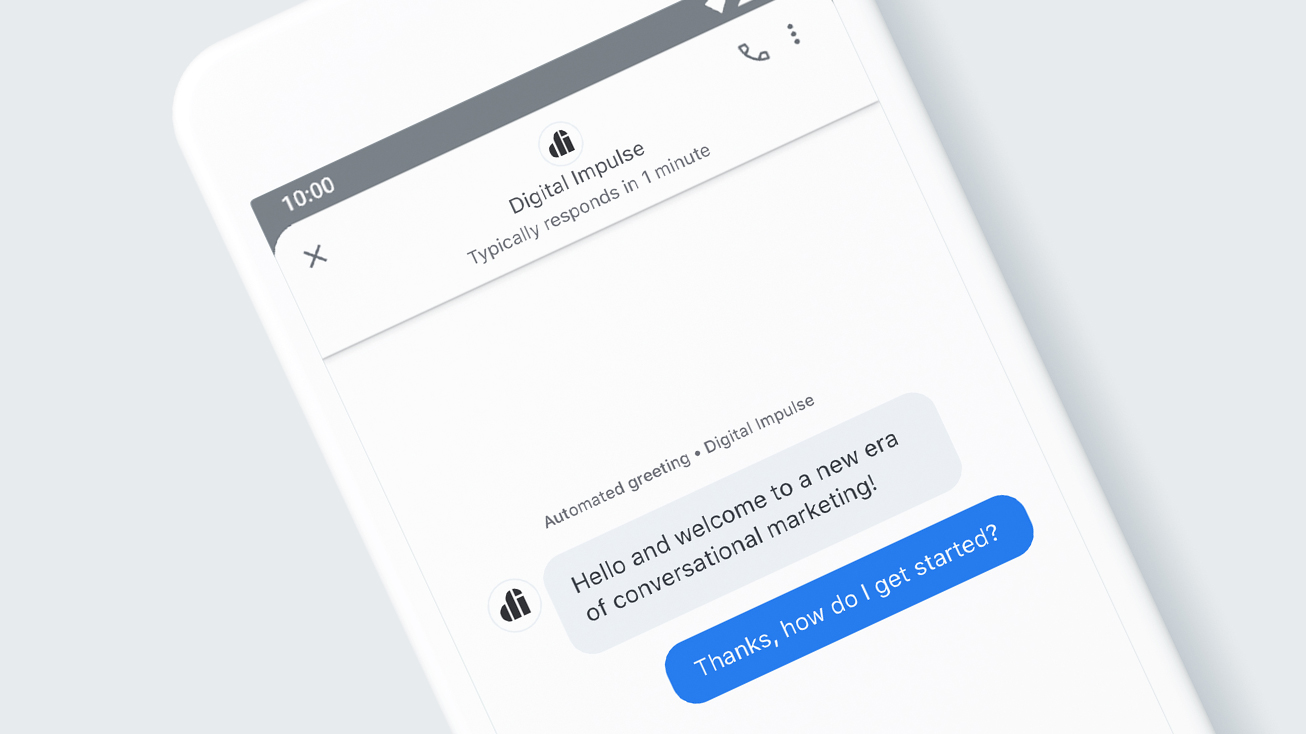Any writer will tell you that it’s easier to write something when you know who it’s for.
The reality is, no matter how talented you are, you’re likely not going to publish something that pleases everyone. And trying to create the content equivalent of O negative blood will only result in frustration and, ultimately, a vague and forgettable product.
That’s why identifying your ideal audience at the outset is so important. It provides a target to channel your ideas towards and a filter to run them through.
Clearly defining who your content (and broader marketing strategy) is for will help solidify your brand voice and – the more you put out – give rise to a tone and style that are unique to your business.
These ideal customer sketches—known as “buyer personas” – are critical for brands striving to produce content that feels carefully tailored and non-generic. This personalized messaging resonates more deeply and directly with target demographics and therefore drives more conversions.
What exactly is a buyer persona?
A buyer persona is a semi-fictional representation of your ideal customer: a human being that you conceptualize, and sketch based on market research, insights, surveys… and tempered optimism.
This imaginary(ish) person helps inform content creation and even product development to better align with what your real customers will be looking for.
Buyer personas are one of the most underrated and underutilized aspects of a marketing strategy, but when used effectively they can be a powerful tool to help demonstrate a full understanding of your target audiences.
The persona is only “fictional” insofar as they’re technically made up… but they’re also an amalgamation of very real traits; an avatar that embodies the characteristics that a customer who buys your product or pays for your service would have.
Can you have more than one buyer persona?
Yes. Absolutely. 100%.
Your company is never limited to just the one buyer persona. You can develop different characters to serve as ambassadors for different audience segments since people will inevitably have different needs based on things like their geographic location, age, job title, etc.
Don’t overdo it, though. To maintain brand cohesion and unified messaging, you should create only as many personas as you need. Aiming at too many targets simultaneously will only complicate things.
Step 1: Demographics
Buyer personas may change, but the recipe for creating a good one is, fortunately, more constant. The first step is broadly defining who the person is to the outside world. You can be as detailed as you want at this stage but remember that these demographic questions are meant to be surface level. In its infancy, a buyer persona is a bare-bones sketch of a human being. An outline comprised of information that would appear on this person’s resume or their social media.
Questions to ask when determining your buyer personas’ demographics
- How old is this person?
- How do they identify themselves?
- Where do they live?
- Where do they work? What kind of job do they do?
- What is their education level?
- What is their relationship status?
- Do they have kids?
- Do they own a car or a home?
- What is their salary?
- What are their spending habits?
- What kind of mobile device do they use?
- What groups or organizations are they members of?
These basic “tell us about your life” questions can offer surprisingly helpful context to a person’s choices, fears, challenges, and aspirations. These will be the bedrock for each persona as you move into these more psychological sketches of your buyers.
Step 2: Psychographics
Now, the fun part begins.
Remember, this person is made up, so there’s no such thing as invading their privacy. Don’t be afraid to pull back the curtain and riffle indiscriminately through their fictional personal life.
Really get in their head and unearth the roots of what makes them tick. At this stage, your job is to reveal their personality and who they are on a more familiar level.
Questions to ask when determining your buyer personas’ psychographics
- What is this person interested in?
- What motivates them?
- What terrifies them?
- What are their wildest dreams?
- What are their hobbies?
- Do they exercise?
- What music do they listen to?
- What kind of books do they read? Do they even read?
- Do they have pets?
- What are their daily rituals?
- What were they like in high school or college?
- What kind of clothing brands do they wear?
Trust us on this one: some of these questions may seem superfluous, or the answers may not seem hyper-relevant at first glance. You may not even include all of these answers in your final persona sketch. But having these deeper psychological traits touch on some of the core motivators and obstacles we all encounter as humans—and it’s this rich texture that makes a good persona dynamic, and ultimately useful for nailing down your most impactful messaging.
Step 3: Economics
This is where it all comes together. You’ve covered the “persona” part, now it’s time to tackle the “buyer” part.
By this point, you should have a finely detailed illustration of who this person is to the outside world and to themselves.
They are, for all intents and purposes, a passably real human. If your buyer persona magically came to life and walked into your office, none of your coworkers should suspect you were the Geppetto to their Pinocchio.
If you feel like that’s the case, then you’re in a good position to pivot away from character development and begin focusing on plot development.
In other words, what will this person’s journey towards discovering and engaging with your brand look like? During their period of active research leading up to a purchase, what will catch their eye and inspire them to convert?
Delve deeper into your persona’s spending behavior. Based on their demographic and psychographic data, you know what sorts of products they typically buy. Now, think beyond receipts and price tags and try to imagine what drives them to buy those products. The objective here is to reveal the propelling forces behind their spending habits and figure out how you will harness that momentum to benefit your business.
Questions to ask when determining your buyer personas’ economic behavior
- Who is this person as an economic actor?
- How and where do they make purchases?
- Do they have a propensity towards paying for subscription services? Or, do they prefer to make purchases on a more spontaneous ad hoc basis?
- How often do they go out for meals?
- Do they typically pay for things with cash, cards, or virtual methods?
- Do they invest their money?
- Do they have student loans?
- Are they saving for retirement?
All of these insights will tell you what type of consumer they are and have the potential to be. They can also help unlock key insights into their purchasing behavior, and how they make that leap from “interested” to “convinced.”
Identify their challenges
To further uncover what motivates them as a buyer, you need to understand what challenges they face.
- What obstacles are they looking to overcome?
- What do they feel is missing from their life?
- What problems are they actively looking to solve and how?
Think of solutions
- What would they perceive as the solution to their problems?
- Where do they look for these solutions? Online? Friends? Coworkers?
- What products or services are available for them to purchase as a means of overcoming their obstacles?
Asserting yourself
- How will you position yourself as the solution to their problems?
- Where will they discover you?
- What aspect of your product or service will catch their eye the most?
- What will inspire them to choose you over other available options?
- Is there an easy way for them to make a purchase once they’ve found you?
Step 4: Compile all this information into a shareable format
We realize that this blog has been lousy with question marks but remember that the point is to ask (and answer) enough questions to create a fully fleshed-out illustration of your ideal customer. The more detailed they are, the better.
Once you feel like you’ve gathered sufficient demographic, psychographic, and economic information about this fictional person, compile it into an easily digestible and shareable format. This way, the persona can be passed along to your coworkers in marketing and sales.
Give the persona a memorable name that reflects their personality. We’ve seen everything from the purposely silly—like Hipster Harold, Fitness Fiona, Bookworm Blake, or Party Pat (alliteration is optional, but encouraged) —to the more straightforward. Whatever your choice, make it something meaningful to really give each persona an identity all their own.
Getting everybody intimately familiar with the buyer persona is key to creating consistent messaging across channels. That’s where a persona can have real value: providing a consistent messaging framework for all members. Be sure to reference them as you develop your strategy.
Step 5: Integrate buyer personas into your content creation framework
Before you begin the process of drafting a new blog post, designing an ad, or writing an email, consult your buyer persona. Pretend they’re sitting in the room with you and ask, “Is this article something that you would care about?” Or “What would make you click on this Instagram ad?”
Having this imaginary friend to bounce your ideas off of will help you create marketing content that speaks directly to their problems, interests, and aspirations.
This window into the mind of your consumer base is especially helpful during the creative process because, as the general marketing orthodoxy states, there are six basic consumer mindsets:
- Surprise me
- Help me
- Reassure me
- Educate me
- Impress me
- Thrill me
Knowing who your buyer persona is will help you formulate ideas that would surprise, impress, help, and thrill that specific person.
And since you’ll likely have more than one buyer persona representing your different customer segments, you can decide which persona (segment) should receive what type of messaging. Just because one of your personas would find an email educational, doesn’t mean they all would. What thrills one segment might bore another. Using psychographic data, you can organize your contacts to receive the content that aligns best with their personalities.
Key Takeaways
Buyer personas are a way to leverage customer segmentation to create a more personalized brand experience for your target audiences.
This means that every blog, social post, video, or ad that your company publishes should be addressed to someone. Even if their name isn’t on it, consumers can tell when a piece of content is meant for them or simply for “whom it may concern.”
On an organizational level, the process of building a buyer persona encourages marketers to think about their business from the customer’s point of view. How will you earn the attention of strangers who don’t owe you anything? It’s a humbling experience that forces you to think in an unbiased way about how the outside world views you.
Out of this self-reflection, you’ll be able to craft messaging that effectively highlights the specific benefits that your ideal customers are looking for during their buyer’s journey. You’ll start publishing content that resonates with your target audience on a more personal level and, hopefully, inspires action.
If your company is interested in crafting well-researched buyer personas that inform high-quality, personalized marketing campaigns, our team would be more than happy to help. Contact us today to start building better content.






